Moreton Island/Mulgumpin is an adventurer’s paradise, with everything from secluded campsites to challenging four-wheel driving to underwater wonderlands.
Located only 60km from Brisbane — albeit by sea — Moreton Island/Mulgumpin offers plenty to entice travellers who enjoy getting back to nature, whether that means a quiet campsite overlooking the ocean, tackling beach driving in a 4WD or hitting the slopes for an afternoon of sand tobogganing.
Moreton Island’s Traditional Owners are the Nughi people, and it the third-largest sand island in the world — beat out only by Queensland’s other two sand islands, K’gari (Fraser Island) and North Stradbroke Island/Minjerribah.
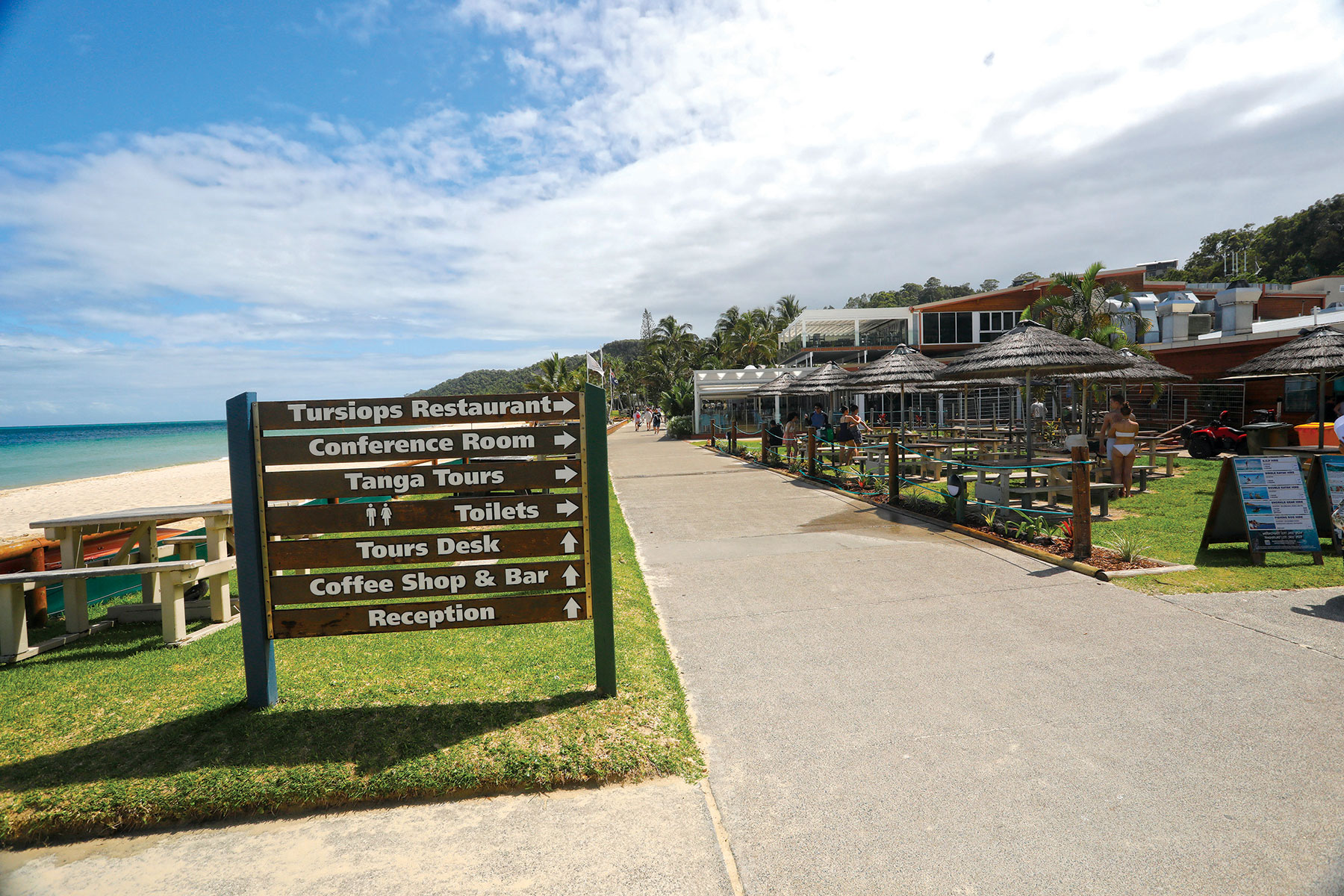


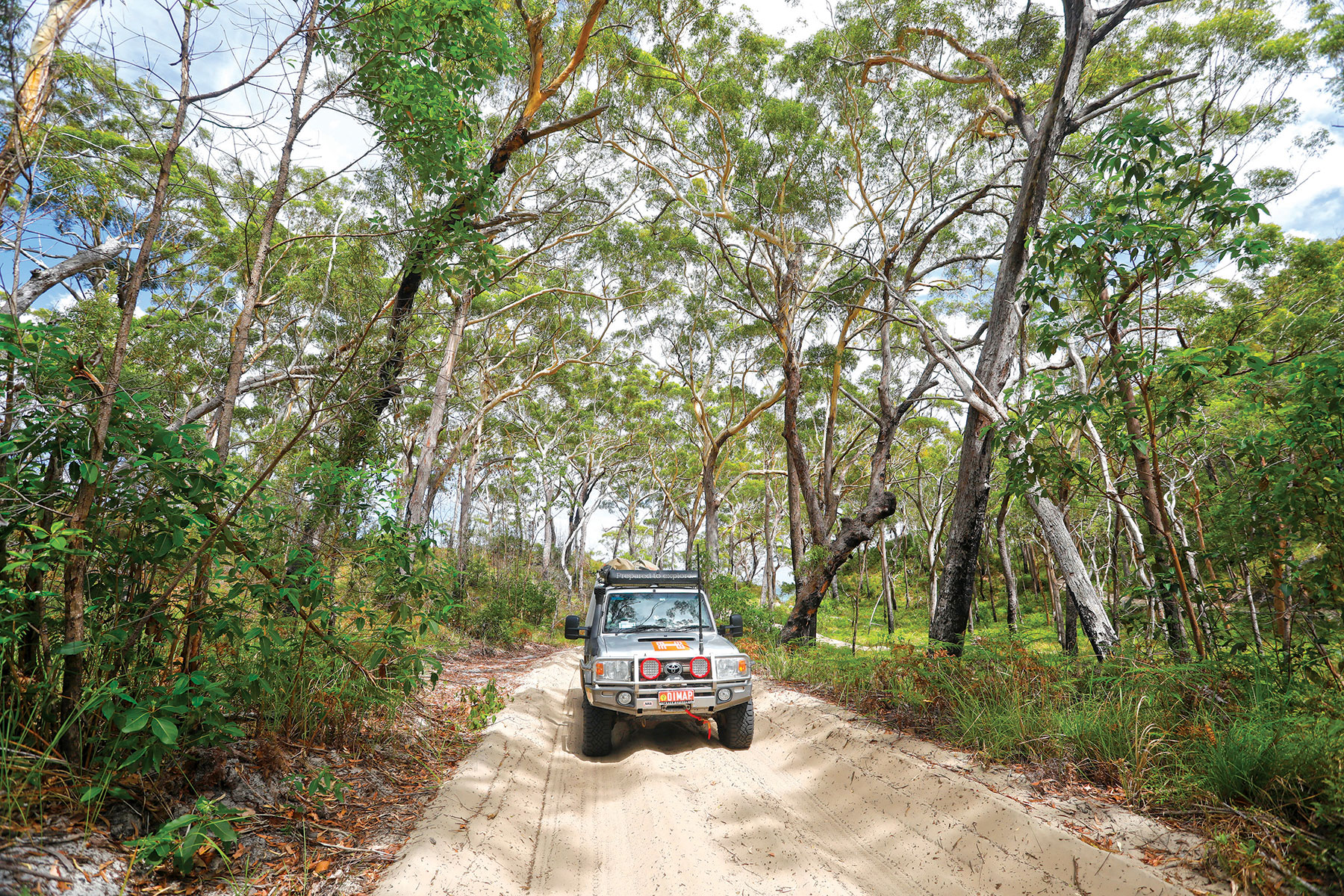
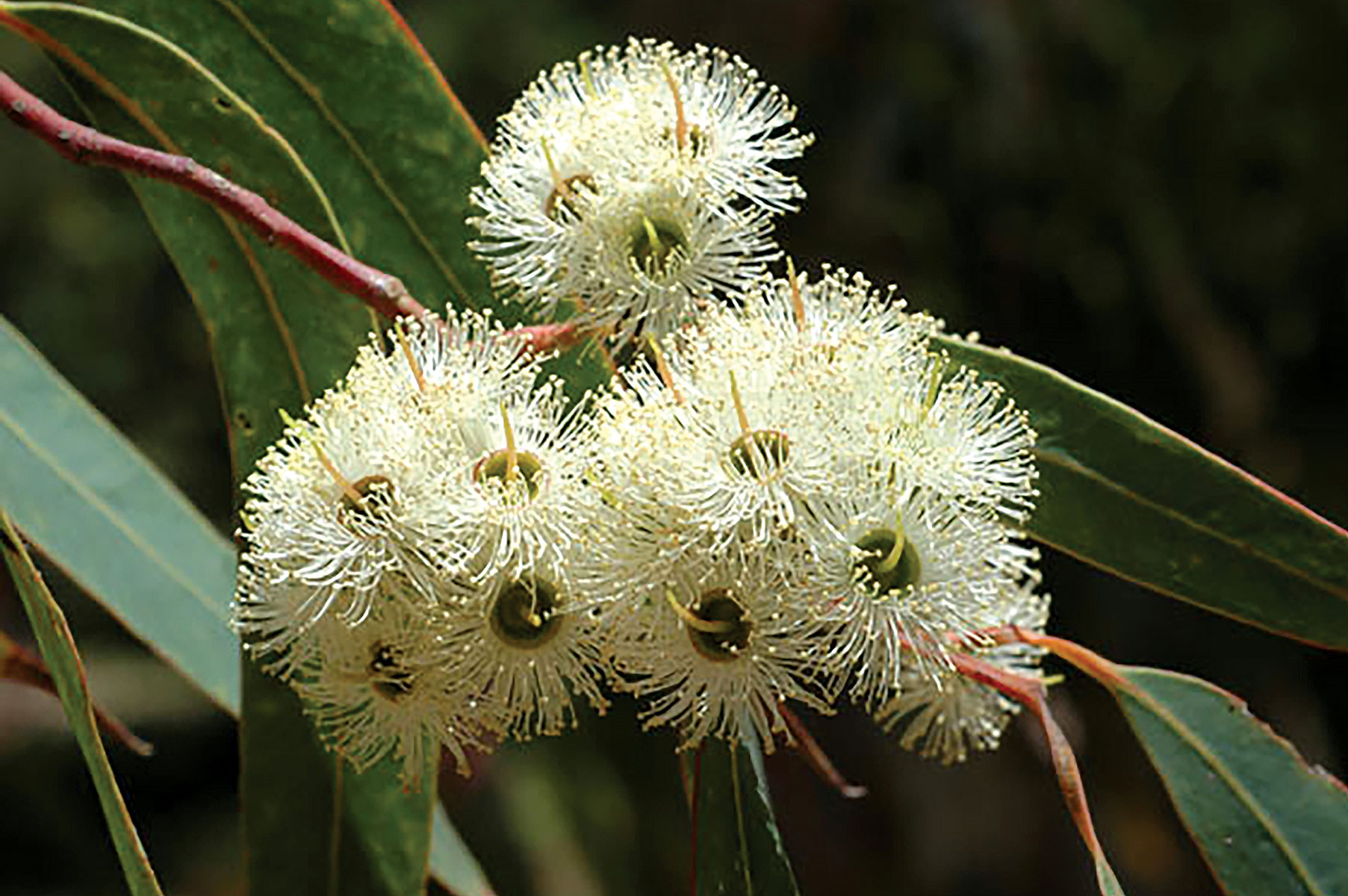
The island body covers approximately 190,000 hectares, and apart from two sections is entirely comprised of sand.
Campers must be almost entirely self-sufficient as there are very limited places to restock basic supplies or fuel on the island (and these may not always have stock).
There are four main settlements on the island, all of which can be found on the western side: Bulwer, Cowan Cowan, Tangalooma and Kooringal. If you’re visiting without a camper or tent, these locations are where you’ll seek out holiday rents or other accommodation.
But before we dive into the important details of how to get there, where to camp and what adventures you can enjoy, it must be noted that 95 per cent of the island is a designated Recreation Area, and the island and surrounding waters are protected by a number of governing bodies, so ensure you treat the land with respect and abide by all rules and restrictions when it comes to four-wheel driving, boating and fishing.
Required permits
Before you set sail with your camper, you will need to organise a camping and vehicle permit to enter Moreton Island (fees apply).
These are organised through Mulgumpin Camping:
P: 07 3506 2371
E: bookings@mulgumpincamping.net.au
Getting there
There are a few ways to get to the island, including via passenger ferry, private boat, plane or helicopter, but if you’re heading over with a camper trailer and/or 4WD, the Moreton Island Adventures (MICAT) barge is your go-to.
Moreton Island Adventures (MICAT)
P: 07 3909 3333
This barge departs from the Port of Brisbane and docks down at Tangalooma Wrecks. The crossing takes around 75–90 minutes and runs daily (check timetable in advance, as they do operate on a demand-based schedule).
If you’re visiting in summer for a weekend or long weekend, it’s advised to book at least a month in advance. And if you’re planning on visiting in peak seasons such as the September, Easter or Christmas school holidays, organise your ticket six months ahead of time.
Where to camp
The island is great for camping all year round, but it does get popular during peak periods and most campsites operate on a ‘first come, best dressed’ basis. Despite this, don't forget that you have to organise a camping permit ahead of time.
Not all campsites have facilities, and as mentioned, campers will need to be almost entirely self-sufficient.
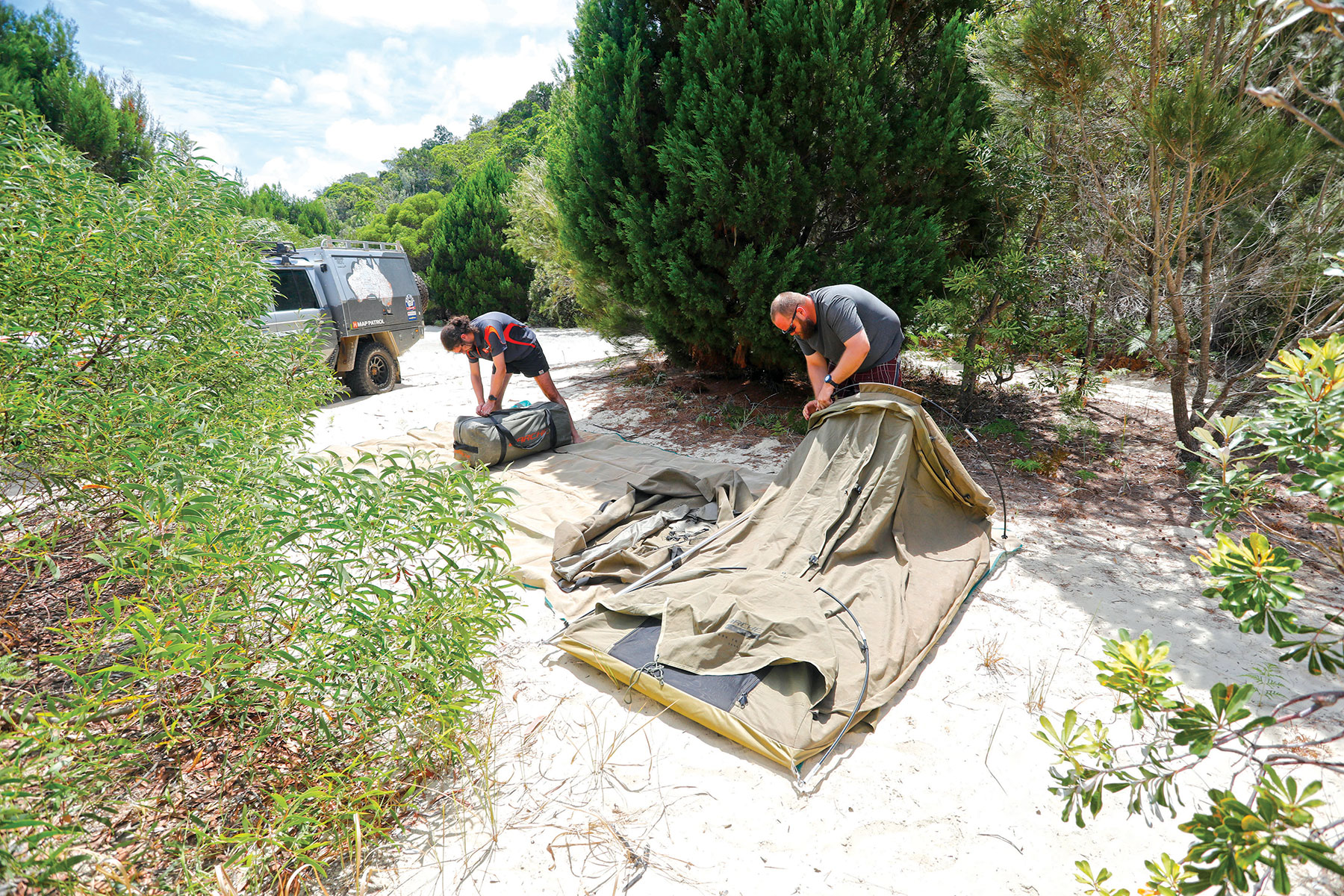
Tangalooma Island Resort, Bulwer and Kooringal are good spots to find some basic supplies, and Bulwer is the only place to refuel — but it may not always be available.
Almost all campsites and zones on the island are camper trailer-friendly — the only one that isn’t is The Wrecks.
Here are some of the best options for camping:
Ben-Ewa camping area
12 medium-sized sites. Located on western beach, a short drive from MICAT barge landing. Calm waters for swimming, great for young families.
North Point camping area
21 large, grassy sites — four suitable for camper trailers. Easy access to surf beach and walking tracks to nearby attractions such as Champagne Pools, Honeymoon Bay and Cape Moreton Lighthouse.
Comboyuro Point camping area
49 shaded sites — good area for larger groups with camper trailers. Nearby attractions include Tailor Bight and Comboyuro Point.
Blue Lagoon camping area
25 medium to large camping sites located behind sand dunes on the eastern side of the island. Short walk to Blue Lagoon and the ocean.
Yellow Patch camping zone
14 sites (small and large), many with ocean views and shade. No facilities available. Nearby surf beach and large tidal lagoon.
North-East camping zone
89 sites (small and large), many with sea views and shade. Close to Blue Lagoon, or head to the beach for swimming, surfing and fishing.
South-East camping zone
35 sites among foredunes behind the ocean beach. Access is complicated, but experienced drivers will enjoy a secluded beachside campsite.
South-West camping zones
24 sites — recommended for experienced sand drivers only, as some sites are only accessible at low tide.
North-West camping zone
76 shaded sites, some within walking distance of Bulwer. Ideal for young families, close to Curtin artificial reef.
What to do
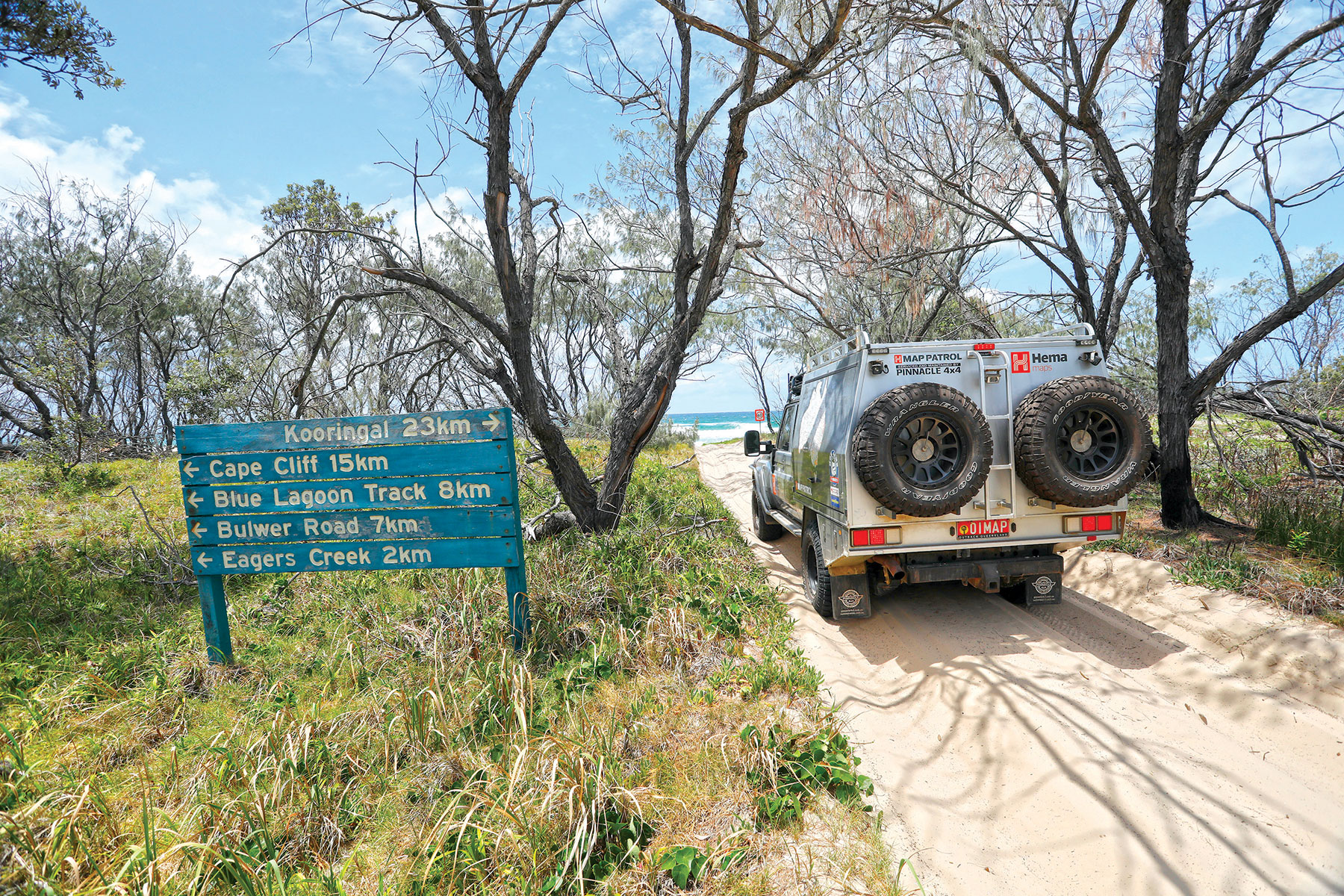
Moreton Island offers an ideal location to return to nature — for some this means a quiet escape watching the sunset over the ocean, and for others it’s looking for a bit of excitement. And the island has that to offer in spades!
Here are some of the best things to experience during your visit:
Sand tobogganing
Most of us will get our fill of the sun and sand while sitting on the beach, but the more adventurous at heart may be enticed over to Moreton’s tall sand dunes to experience what some consider an extreme sport: sand tobogganing.
All you need for this sport is a waxed Masonite board, adequate fitness to trek your way up the tall sand dune and a sense of adventure. Once you’re at the top, lie down on the board and let gravity do the rest.
Please note, you can reach speeds of up to 60km/h, so take care. And if you’re concerned, just remember that the higher you climb the faster you’ll go.
An alternative to tobogganing is bringing a sandboard — much like a snowboard — and ‘surfing’ down the dune’s face.
There are three main spots on the island to go sand tobogganing or sand surfing. The Desert (near Tangalooma Resort) and Little Sandhills (south side of the island) are the best for beginners and kids, while Big Sandhills (also in the island’s south) offers a bit more of a challenge with dunes reaching up to 90m in height and longer, steeper slopes.
This activity can be experienced solo (just remember to take water, sunscreen and hat), or organise one of the various tours running via Tangalooma Resort or out of Brisbane.
Four-wheel driving
With no sealed roads on the entire island, it’s easy to enjoy a bit of offroad four-wheel driving at this destination. All 4WDs should have high clearance and low range function, and ensure you reduce your tyre pressure before departing the barge as there’s deep, soft sand as soon as you hit the beach.
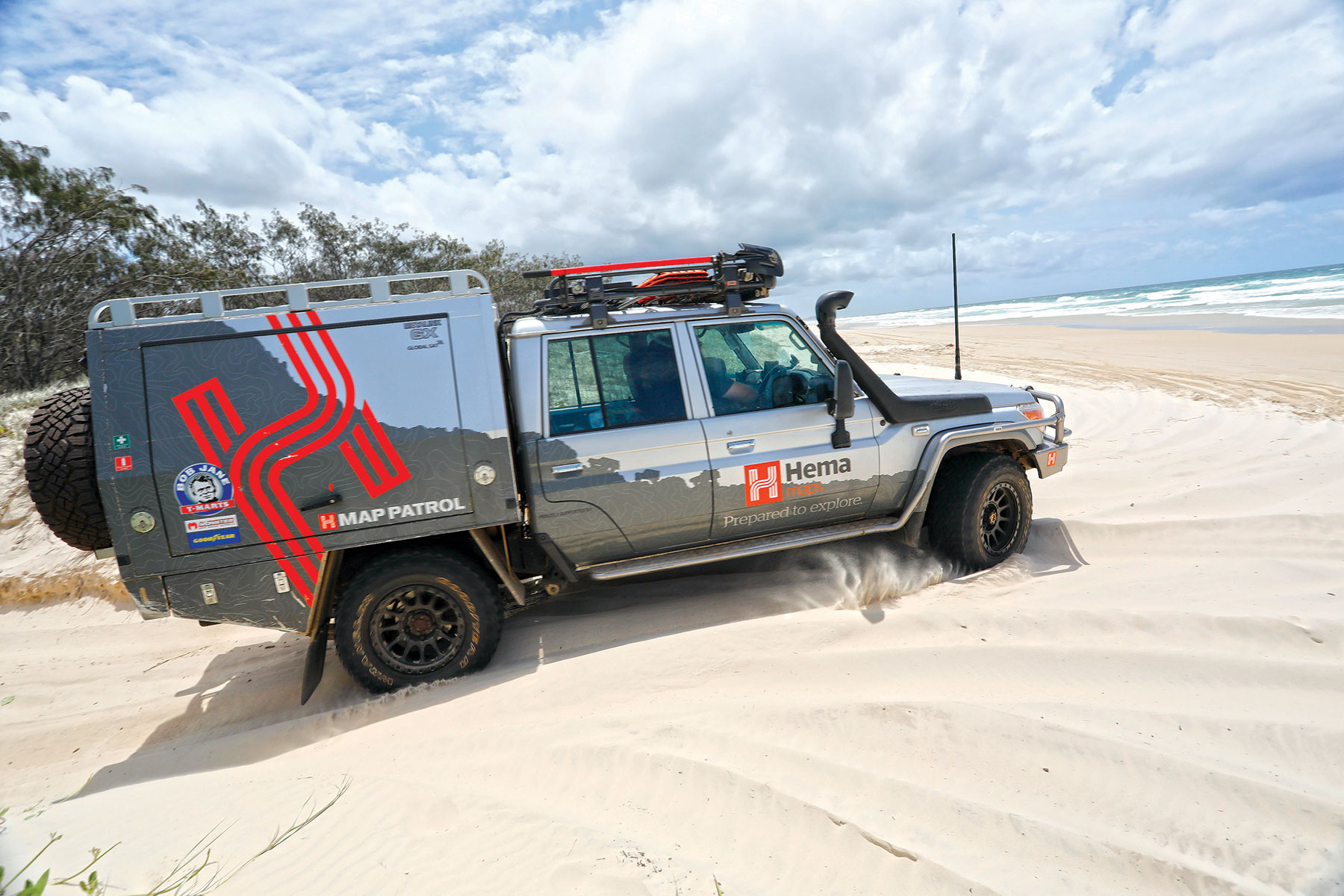
As previously mentioned, you’ll need a vehicle access permit, and this must be displayed on the windscreen at all times.
Normal Queensland road rules apply when driving around the island and abide by all signs and restrictions for the preservation of the island’s environment.
There are five inland tracks to explore the heart of the island, but one of its most popular drawcards is the 70km+ of drivable beaches which connect the settlements on the island. With the right planning around the tides, four-wheel drivers are able to circumvent the entire island.
If you’re hitting the sand with your 4WD, avoid driving on the beach at least two hours on either side of high tide — and potentially leave even longer as some areas are more effected by tidal activity.
Ensure you’re carrying recovery gear, as it’s very easy to get bogged in soft sand.
Bushwalking
There are plenty of bushwalking tracks to explore around the island, ranging in length. Here are some top picks:
Honeymoon Bay Track (20min/700m return)
This is a short walk that departs from North Point camping area. There are some attractions for history-lovers to keep an eye out for, and stunning views over Honeymoon Bay, North Point and Cape Moreton.
Mount Tempest Lookout Track (2hr/2.5km return)
This walk takes you up the world’s tallest coastal sand dune, meaning it’s long and steep with many sandy sections and steps. There are seats if you need to take a short break, but those who persevere will enjoy stunning panoramic views from the summit.
Telegraph Road Track (6hr/16km return)
This is the longest designated track on the island and follows the old telegraph line that was built in the 1890s to connect the Cape Moreton Lighthouse — walkers will spot many relics along the track, stunning windflowers in spring and plenty of wildlife.
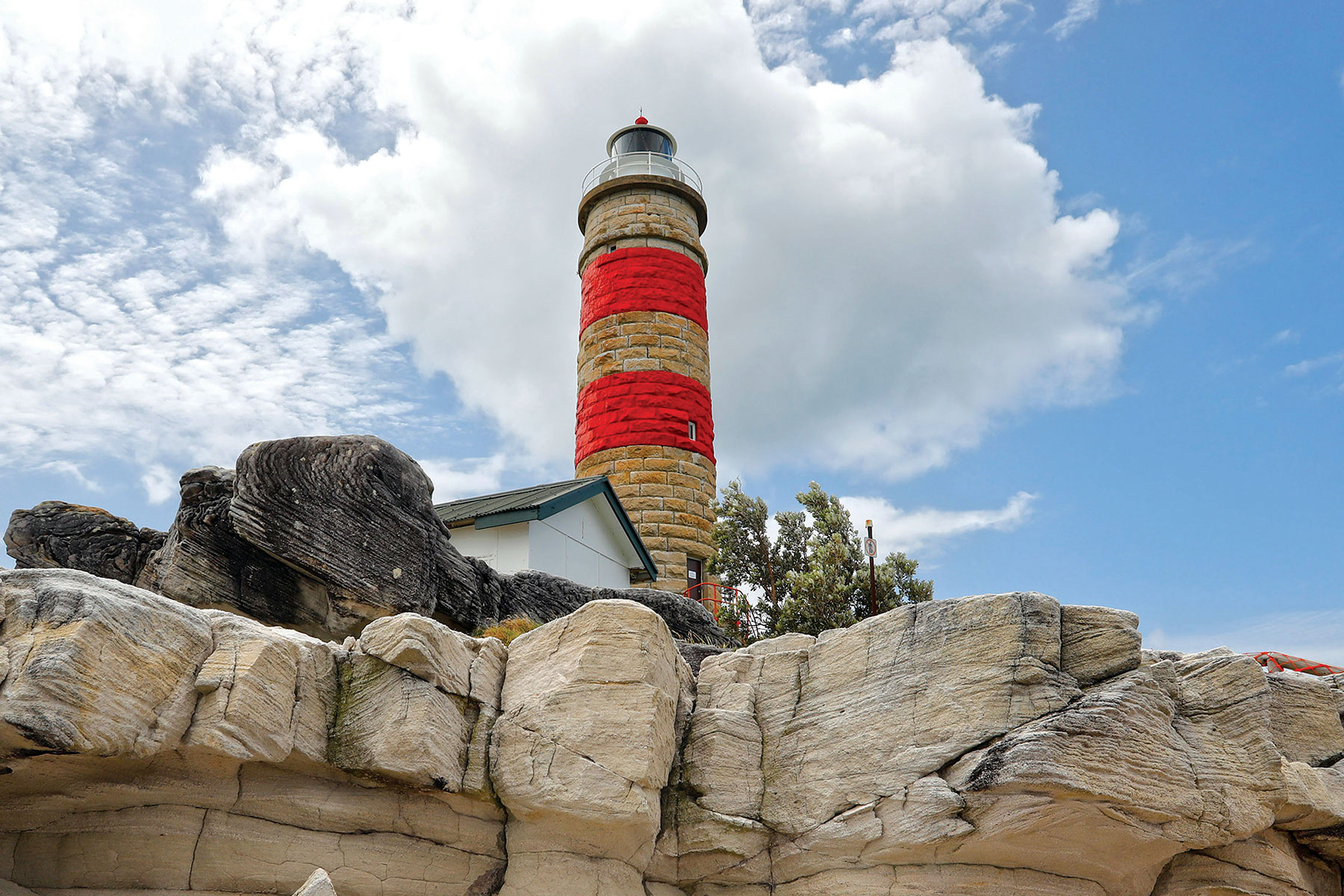
Snorkelling, diving and fishing
For those who love getting out or in the water, Moreton Island doesn’t disappoint. Many of the pristine beaches are ideal for swimming and on the western side of the island you might also luck out and see dolphins and dugongs, or green and loggerhead turtles between November and February.
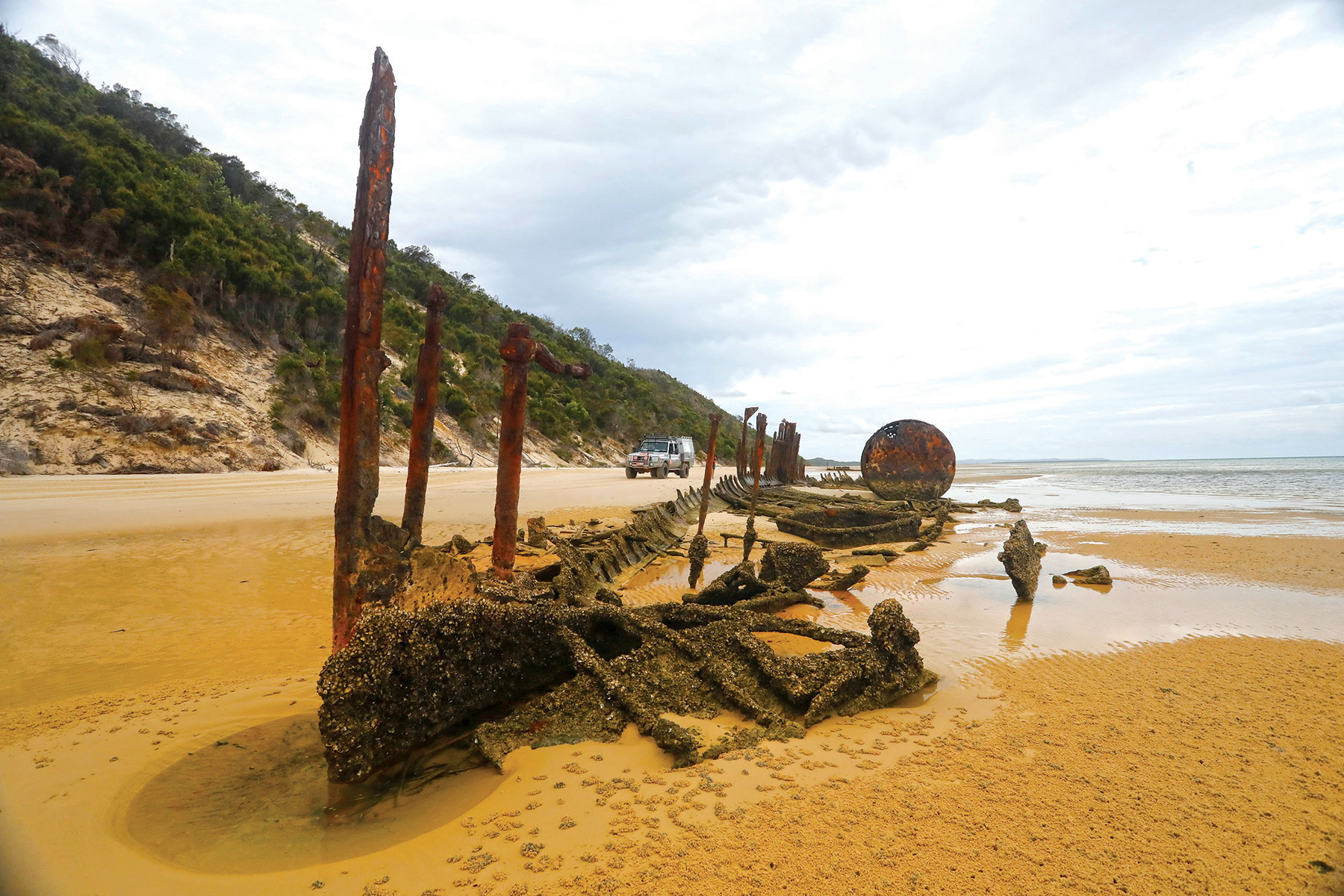
When swimming around the island, it’s always best to swim with a friend as there can be strong rips and currents.
If you’re not a strong swimmer but want to experience some of the attractions below, hire a glass-bottom canoe or kayak or join a guided snorkelling tour.
Here are some popular spots well worth visiting:
The Tangalooma Wrecks
Located just north of Tangalooma Resort, the Tangalooma Wrecks are 15 deliberately sunk ships that create an artificial breakwater and is now an artificial reef covered in coral formations. It’s teeming with vibrant tropical fish, dolphins, turtles, wobbegongs and more and is one of the best spots for snorkelling and diving.
Anglers will also enjoy recreational fishing here — trevally, kingfish and yellowtail can be found around the reef.
The Curtin Artificial Reef
Covering 40,000sqm, this reef is on the western side of the island, north of Cowan Cowan. It dates back to 1968 and was specifically created as an artificial reef to support the island’s marine life and encourage scuba divers to visit the island. The eccentric collection of items used to create it (including vessels, car bodies, pontoons and even a Brisbane tram) are too deep for snorkelling and there are strong currents, so it’s best explored by experienced divers.
When it comes to fishing, there’s plenty to find, including trevally, kingfish and barracuda.
The Bulwer Wrecks
There are four shipwrecks at this destination — three of which were intentionally scuttled offshore to create a breakwater — and it’s a great spot for snorkellers wanting to get up close and personal with the island’s marine wildlife.
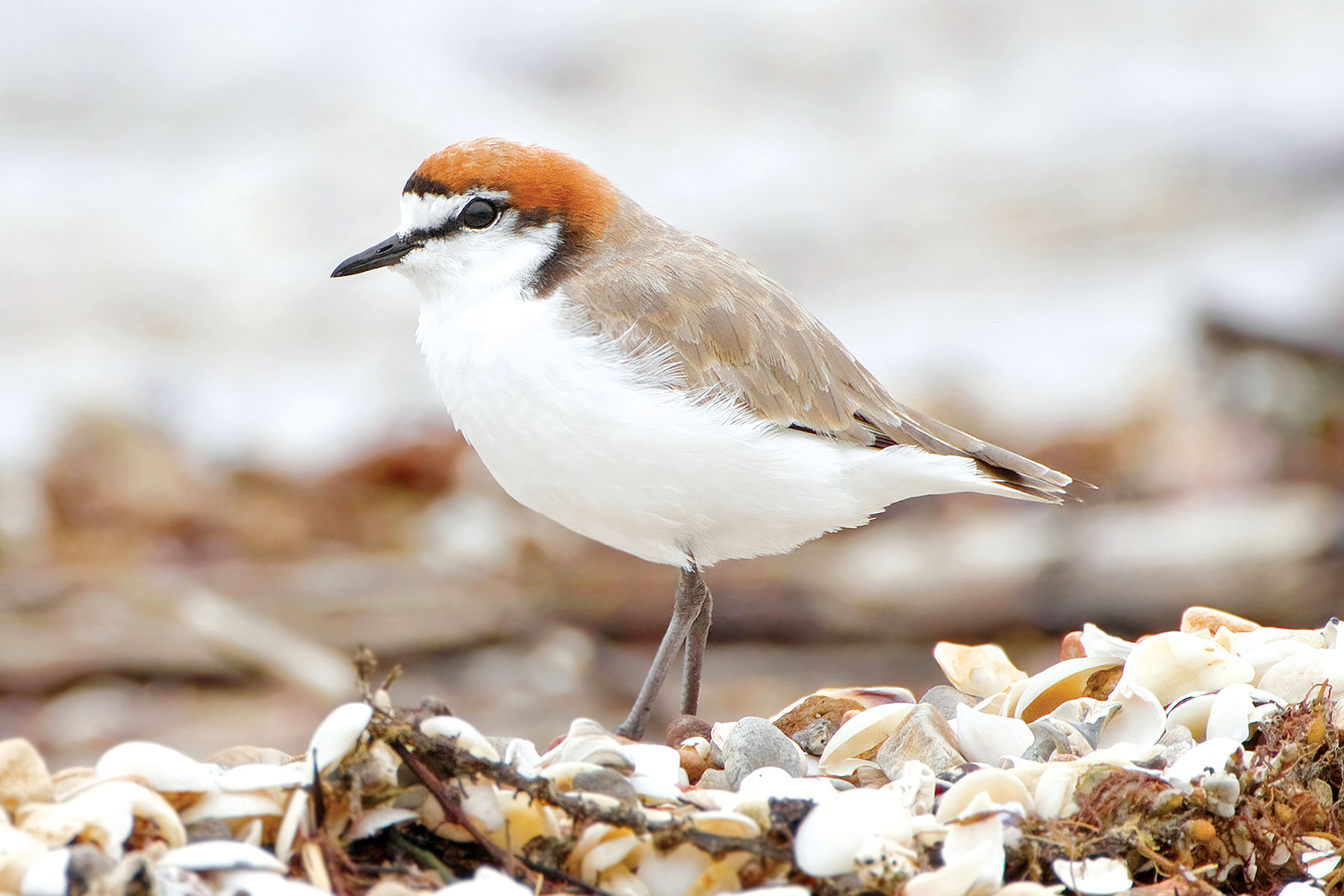
THE NEXT STEP
Are you ready to experience the freedom of the open road? Don't wait - Find your dream getaway now!




